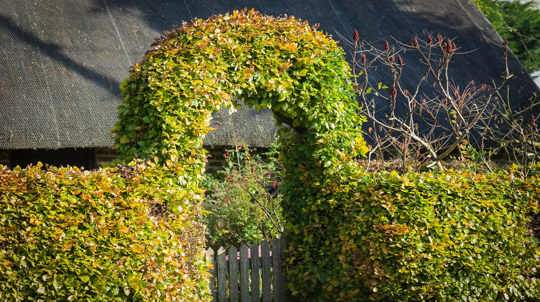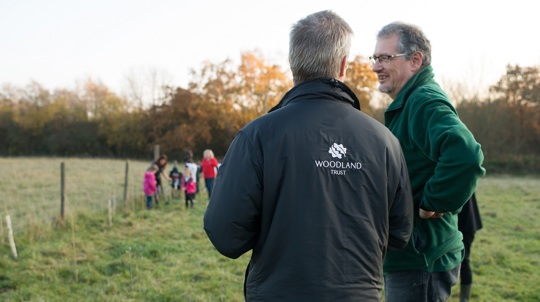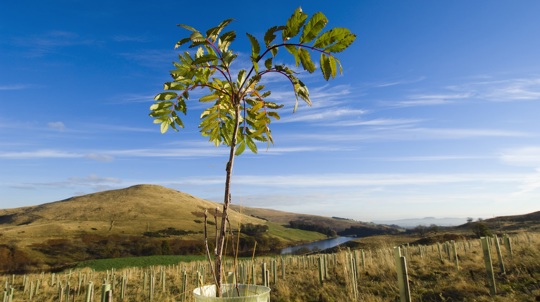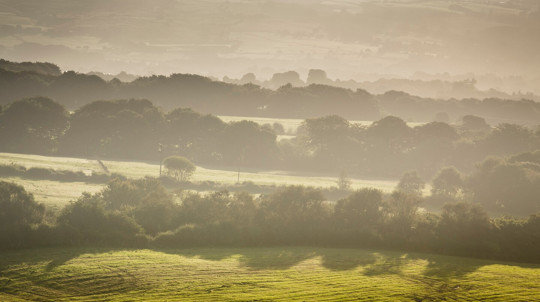Poor maintenance, pests and diseases can cause gappy hedgerows that have fewer benefits than full, healthy hedges. To help them thrive again, fill in gaps with native species ideally sourced and grown in the local area, or in the UK.
How to plant and maintain native hedges
The small but mighty hedge packs a punch for people and nature, sheltering wildlife, cleaning our air, capturing carbon and much more. Explore how and when to plant and prune your hedge for the best results.
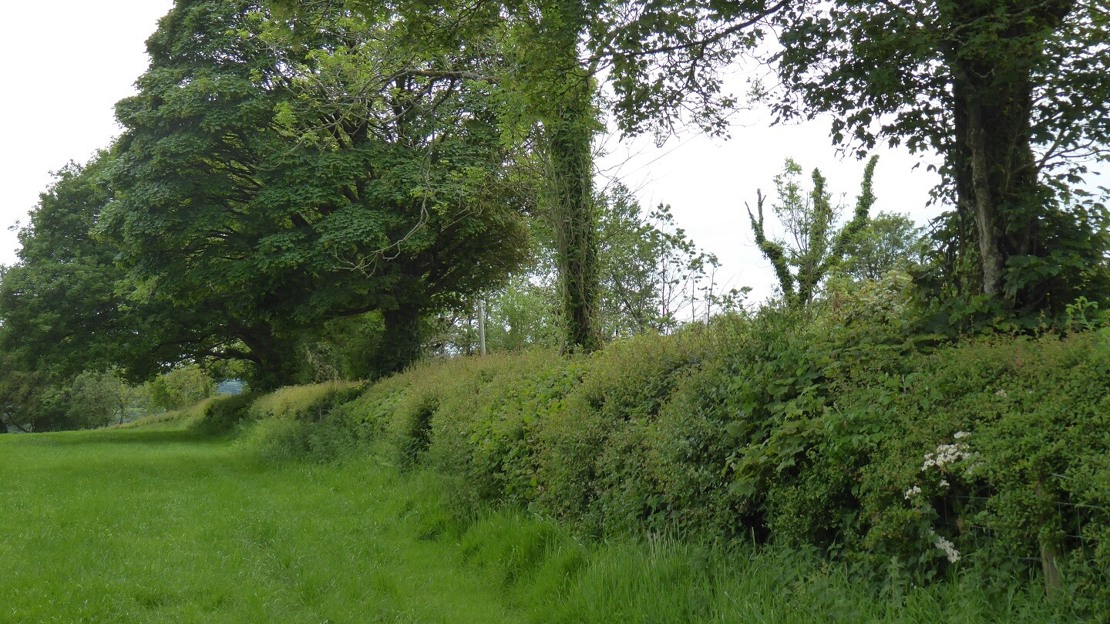
Planting trees and shrubs in a native hedge
Plan ahead
Proper planning will give your new hedge the best chance of success, so take time to consider where, when and how you'll plant it, as well as which species are best for your needs. For example, some species, like oak and wild cherry, are toxic to horses, so should be avoided if you're planting near horse fields.
Plan your planting and order your saplings to arrive when you know you'll be able to plant them. If you can’t plant immediately, keep the roots moist or if you need a lot more time, lay the roots of each tree in a trench in a sheltered spot and carefully backfill with soil. This is known as heeling in.
If your new hedge will border a neighbour's land, plant it approximately 1-1.5m from the boundary line so it can grow without overhanging their property. It's a good idea to discuss with your neighbour in advance to avoid any potential future disputes over managing the hedge.
How to plant a hedge
- Remove any weeds and roots from the area and, if possible, mulch with organic matter like bark to help retain water and feed roots.
- If you’re planting a single hedge, plant shrubs 30cm apart in a line.
- For a double row hedge, begin by setting out two parallel string lines. Plant in a zig-zag pattern with five plants per metre, maintaining a 30-40cm gap between each plant.
- Plant a tree every 6m with a tube and stake to protect it. Allow it to grow to full height to maximise the benefits of your hedge.
- Allow your new hedge to establish itself for at least a year. In the following spring, cut the shrubs just above a bud so that they are around 60cm tall. This encourages the plant to bush out. After this initial trim, let your hedge settle for another two years before you start regular trimming.
When to plant a hedge
The best time to plant a hedge is when the saplings are dormant during winter, from November to March.
Which fast-growing shrubs and trees are best for hedging?
Willow and hornbeam are particularly fast-growing and can often be planted with blackthorn, hawthorn and hazel. These plants will most likely arrive as bare-rooted whips 20-90cm tall, so don't be surprised if they're small and twig-like! If planted and maintained correctly, they'll soon grow.
Buy or apply for hedge packs and funding
Whether you're planting in a garden, a public space or for your business, we've got the trees and expert advice to help your hedge thrive.
Under the Wildlife & Countryside Act 1981, it's an offence to damage or destroy the nest of any wild bird while it is being built or in use.
When to cut hedges
Trimming is essential for long-term maintenance, but it's best not to cut an established hedgerow every year. Allow your new hedge to establish itself for at least a year before you start trimming it, then in the following spring, you can cut the shrubs just above a bud to encourage dense, bushy growth, especially from the base. After this initial period, you can leave it to settle for a couple of years before cutting more regularly - every 2-3 years is ideal as this will increase flowers and berries, and provide good cover for wildlife.
Hedge cutting season is October to February, as you may disturb nesting birds from March to September. To help wildlife, waiting for February or March is recommended, as cutting in autumn reduces fruit available for overwintering birds that rely on this food source. Waiting for late winter will help:
- birds and mammals that rely on fruit to survive winter
- early emerging insects that rely on spring flowers
- moths and other animals that need shelter.
A winter cut is great for the hedge too as this is when trees and shrubs are dormant, so a shape-up won't stress them out.
How often should you prune a hedge?
A lot of native hedgerow shrubs only flower and fruit on the previous year's woody growth, so cut hedges no more than every other year if you want to see blossom and berries. If you want a more formal look for your hedge, you may need to trim once or twice a year.
Hedges are generally 2m tall and 1.5m wide, and are made of continuous stretches of shrubs dotted with taller trees.
Before you start hedge trimming
Pruning needs to be done correctly to encourage blossom and fruit while improving the hedge's structure and value for wildlife. Remember that trimming in February and March is recommended.
What tools do you need to trim a hedge?
- Secateurs - perfect for fine cuts.
- Hand shears - great for small hedges.
- Electric or petrol trimmer - for tackling a large hedge.
- Twine or string - for setting out a line to follow.
- Ladder - so you can approach cutting from the right height.
- Personal protective equipment like gloves and goggles.
Be safe
- Always consider your own safety and that of others before you start.
- Wear protective eyewear, heavy-duty gardening gloves and make sure your path is clear.
- Check your equipment is in good working order, well adjusted, clean, sharp and lubricated.
- Make sure you have solid footing so you're not at risk of falling.
- Get to know your hedge species. Make sure you know if any harmful plants, like laburnum, grow in your hedgerow.
- If you're using an electric hedge trimmer, place the cable over your shoulder so you don't trip up or cut through it.
How to trim your native hedge
Hedges could easily get out of hand, become leggy and turn into lines of trees. Follow our hedge trimming tips to help keep their structure.
1. Assess and plan
Look at the hedge's shape and how the limbs sit. Consider that the structure will attract different species – wren prefer the lower sections while bullfinch like the taller parts of a hedge. Set up your string line as a guide to help keep your cuts level. Choose whether to retain some of the current year's growth for flowers and fruit next year. You could plan to trim one side of the hedge one year and the other side the next.
2. Shape your hedge
Decide on the height and cut the topmost branches off to encourage the hedge to grow outwards rather than upwards.
3. Get your technique right
Choosing the right tool is important. Keep the blade of your shears or hedge trimmer parallel and cut in a sweeping motion from the bottom of the hedge upwards if you are using an electric or petrol hedge trimmer.
4. Create internal structure
After you have given your hedge a good shape, reach into the hedge every metre and cut a stem just above a bud. Do this at a 45-degree angle so that rain can drip off away from the bud. This will make your hedge light and airy inside, instead of lifeless.
5. Allow trees to keep growing
Trees should be tall and can overhang, but should be trimmed if they interfere with public areas, such as roads or paths. If you're cutting back overhanging branches, avoid removing the main structure of the hedge. Cut protruding branches back to where you would like them.
6. Maintain perspective
Step back every now and then for a better view of the overall result of your cuts. It is good practice to leave the base wide and taper upwards so that sunlight can reach all parts of the hedge.


